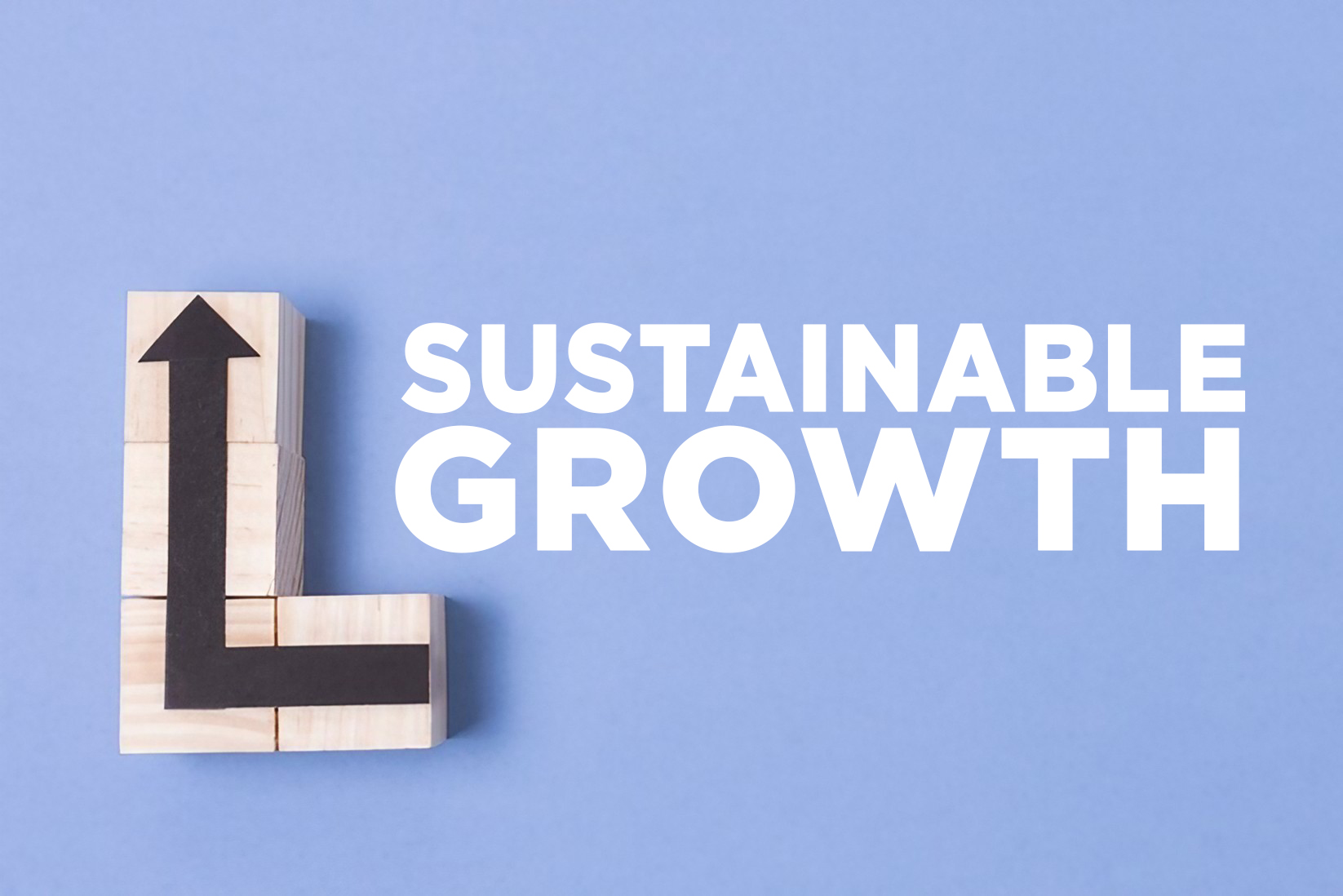Imagine this, You’re a captain steering your company ship through choppy seas. On one side, the wind whispers promises of new horizons and expansion, urging you to sail towards exciting growth. On the other, the voice of reason cautions about stormy weather ahead and the need for a solid, stable foundation.
This is the daily dilemma facing many business leaders: the constant dance between growth and stability. It’s a delicate balance, because both are vital for long-term success. Growth fuels your journey, propelling you forward with new ideas and opportunities. Stability keeps you afloat, providing the solid ground you need to weather the inevitable storms.
The Allure of Growth: A Path Paved with Opportunity
Growth is the fuel that keeps a business engine humming. It’s about expanding your reach, tapping into new markets, and taking advantage of emerging trends. Think of it as a rocket taking off, propelling you to new heights and capturing a larger share of the universe (or at least, your industry).
- Bigger Market Share, More Customers: Growth means more people are buying your products or services, giving you a stronger foothold in the market. Imagine a growing pie, and you’re grabbing a bigger slice of it.
- Attracting Investors: A business on the move, showing strong growth, is more appealing to investors. They see potential and are more likely to jump on board, providing funds for your journey.
- Fueling Innovation: The pressure to keep growing often drives creativity and new ideas. You have to constantly think of ways to stay ahead of the competition, leading to exciting breakthroughs and a more innovative company.
But Growth Can Come With a Price Tag:
- Stretching Resources Too Thin: Rapid growth needs a lot of money and resources. You could be tempted to spend more than you have, putting a strain on your budget and potentially sacrificing quality in the process.
- Losing Sight of Your Company Culture: Growth can happen so fast that you might not notice when you’re drifting away from the core values that made your company special in the first place. Imagine your company culture like a cozy cabin. Adding too many new people too quickly can make it feel crowded and impersonal.
- Vulnerability to Economic Downturns: Aggressive growth can be a risky game. If the economy takes a dip, a company that’s heavily focused on expansion might find itself in a tough spot, struggling to keep its head above water.

Stability: The Anchor That Keeps You Grounded
Stability is like a strong anchor, keeping you grounded during turbulent times. It’s about building a solid foundation that allows you to weather economic storms and maintain your course even when things get rough.
Stability’s Strength:
- Sustainable Growth: Steady, controlled growth, within your established business model, is more likely to last. You’re not rushing ahead blindly, but carefully building something that can stand the test of time.
- Resilience During Tough Times: A financially stable company has a safety net, giving it the flexibility to weather economic downturns, navigate challenges, and emerge stronger on the other side.
- Attracting Top Talent: Employees want to feel secure, knowing their jobs are stable and that they have opportunities for growth. A stable company is like a safe harbor, attracting and retaining the best people.
But Stability Can Lead to Stagnation:
- Innovation Can Fall Behind: A company focused on stability might be hesitant to take risks or try new things, fearing they could disrupt the status quo. This can make it hard to keep up with the rapid pace of change in today’s world.
- Missing Out on Opportunities: Too much emphasis on stability can make you hesitant to seize new opportunities when they arise. This can lead to falling behind competitors who are more willing to take calculated risks.
Finding the Golden Middle: A Balanced Approach to Success
The secret to long-term success lies in finding the sweet spot between growth and stability. It’s about striking a balance that allows you to expand your reach while maintaining a strong foundation, enabling you to ride the waves of change without capsizing.
Steps to Navigate the Middle Ground:
Know Yourself: A Realistic Self-Assessment
Before you chart a course, you need to understand where you stand. Conduct a SWOT analysis – a review of your strengths, weaknesses, opportunities, and threats. It’s like getting a checkup for your company, helping you identify what’s working, what needs improvement, and what possibilities are out there.
Don’t forget to revisit your company’s purpose, values, and mission. This reminds everyone of your guiding principles and ensures your growth is aligned with your core beliefs.
Charting Your Course: A Strategic Plan
Now it’s time to create a roadmap for your future. Develop a strategic plan that balances your growth aspirations with a realistic understanding of your company’s current position and the external forces that might affect your journey.
Look back at past economic challenges. How did they impact your company? This historical perspective can help you determine how much financial cushion you need to survive the inevitable bumps in the road.
- Define your approach to growth: How quickly do you want to expand? What areas are you targeting? How will this growth impact your team, your customers, and your industry?
- Measure Your Success: Setting Clear Goals and Tracking Progress.
Just like a captain uses a compass and charts to navigate, you need clear goals and metrics to track your progress. Define your success indicators, both for growth and stability.
This allows you to make adjustments as needed, ensuring your growth is sustainable and your foundation is strong.

Efficiency is Key: Making the Most of Your Resources
Operating efficiently is like having a well-maintained ship. It allows you to save money and improve profitability, giving you the flexibility to invest in growth when opportunities arise.
- Streamline your operations: Identify any unnecessary processes and simplify them.
- Improve supply chain management: Ensure you’re getting the materials you need at the right time and price.
- Invest in technology: Automating tasks can save time and resources, freeing up your team to focus on higher-value activities.
Seeking Sustainable Growth: A Long-Term View
Focus on growth opportunities that align with your long-term vision and build on your company’s strengths. This will ensure your growth is sustainable, allowing you to build a stronger and more stable foundation.
- Enhance your current offerings: Instead of constantly inventing new products, consider how you can make your existing offerings even better, providing more value to your customers.
- Invest in innovation strategically: Once you’ve achieved a healthy profit margin, invest those gains in innovations that drive long-term growth.
- Don’t chase every trend: Stay focused on your core strengths and avoid getting caught up in every new fad.
Managing Risk: Protecting Your Foundation
Growth comes with risks, so it’s essential to manage them effectively.
- Maintain healthy cash reserves: This acts as a financial cushion, allowing you to weather unexpected storms.
- Manage debt responsibly: Take on debt only when it’s essential and have a plan to repay it.
- Invest wisely: Choose investments that align with your growth strategy and will yield long-term benefits.
Company Culture is Key: Cultivating a Team That Thrives
A thriving company culture is essential for success, especially during periods of growth and change.
- Embrace adaptability: Be ready to adjust your plans as new challenges arise and opportunities present themselves.
- Promote teamwork: Collaboration is crucial for navigating growth and keeping everyone on the same page.
- Encourage open communication: Clear and honest communication is vital for building trust and ensuring everyone is aligned on your vision.
Constant Course Correction: Staying Agile and Adaptable
No plan survives contact with the real world. It’s essential to monitor your progress, identify any areas needing improvement, and make adjustments as needed. Think of it as continually calibrating your compass to keep your ship on course.
- Track your success metrics: Are you achieving your goals? Is your growth sustainable? Are you maintaining a healthy financial balance?
- Get feedback from your team and stakeholders: Their insights can help you identify potential issues and opportunities.
- Be willing to adapt: Don’t be afraid to change your plans as needed, staying flexible and open to new information.
Conclusion
So there you have it – the balancing act of business growth and stability. It’s not always easy, but it’s definitely worth it. Just like baking the perfect cake, it takes the right ingredients, the right technique, and a little bit of patience.
Remember, the key is to find your own sweet spot, the perfect blend of ambition and caution that allows you to grow your business without losing your grip. It’s a journey, not a race, so take your time, learn from your mistakes, and celebrate your successes along the way.

